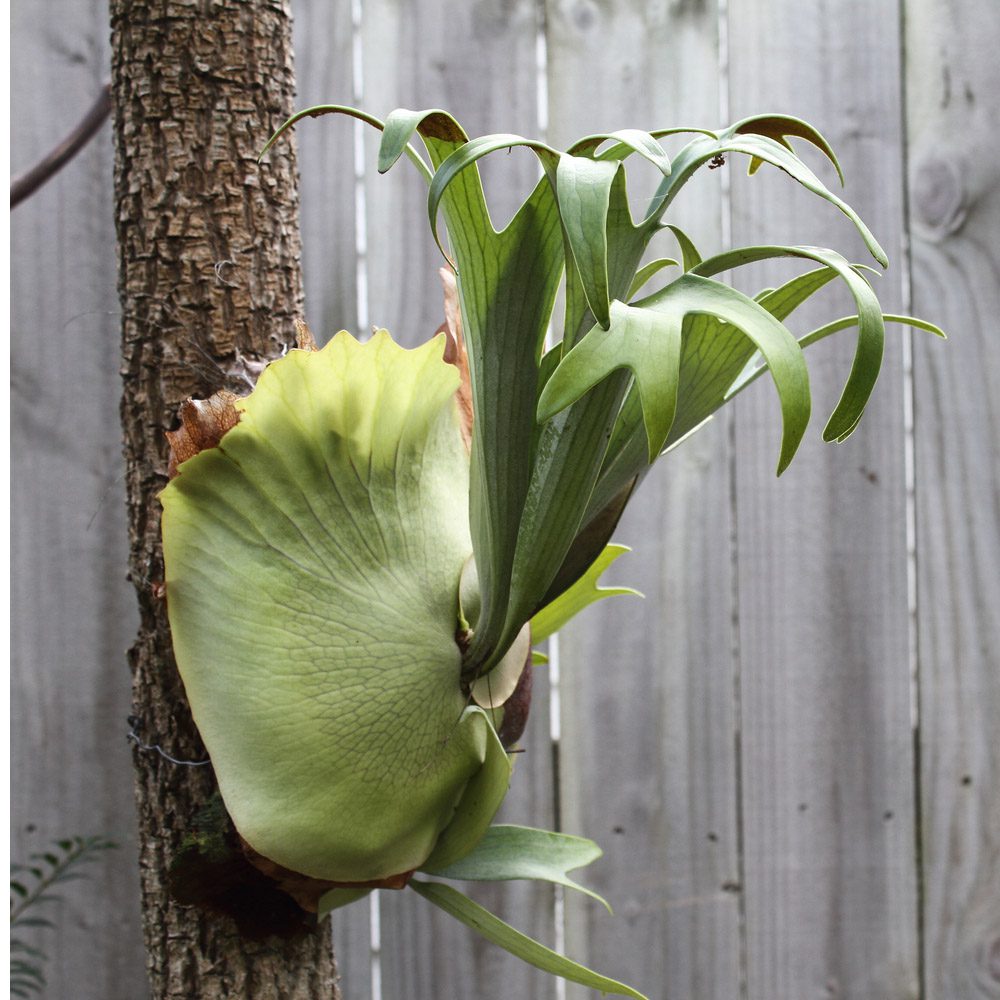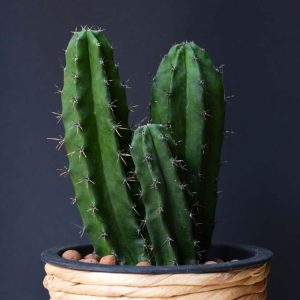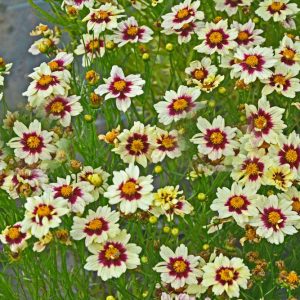Description
Platycerium – Staghorn Fern –
There are 15 or more evergreen, epiphytic ferns, with short creeping rhizomes in this genus. Although most are found in temperate and tropical rainforest in Africa, Asia, and Australia, with one species native to South America. Staghorns ferns are grown primarily for their attractive, often elegant foliage, each plant bearing both sterile and fertile fronds. The mid to deep green sterile fronds are stalkless, rounded to oblong, and smooth edged to irregularly lobed at the upper margins, they become brown and papery, and usually form a persistent mound at the base of the plant. The fertile fronds are spreading to pendent to erect, wedge shaped at the bases, usually gray green and leathery, and are often repeatedly forked. All fronds are covered on both sides with small, star shaped hairs. The spores are formed in large patches on the undersides of fertile fronds, in some species, new plants develop from root buds on the sides of established mounds. Where not hardy grow as house plants preferably in hanging baskets. In warmer regions, grow epiphytically in a tree.
Indoors, grow epiphytically in long fiber sphagnum moss, or fastened to a board or thick branch, in bright filtered light. When in growth, water freely, mist daily and apply a balanced liquid fertilizer every month, water sparingly in winter. Outdoors, grow epiphytically on a tree in partial shade. Divide in spring.
Prone to scale, beetle larvae, and moth larvae,
P. bifurcatum – P. alcicorne of gardens – Common Staghorn Fern – Elkhorn Fern – This very variable, epiphytic fern found from Java to Northeastern Australia grows 36″ tall and 32-36″ wide. It has erect or horizontal, rounded to heart or kidney shaped sterile fronds, 5-18″ long, which are mid to deep green then brown, and are smooth edged, wavy or lobed at the upper margins. Gray green fertile fronds, to 36″, are erect, spreading, or pendent, and forked 2 or 3 times into strap shaped, densely hairy segments. A popular plant, from which many cultivars have been derived.
Zones 12-15





